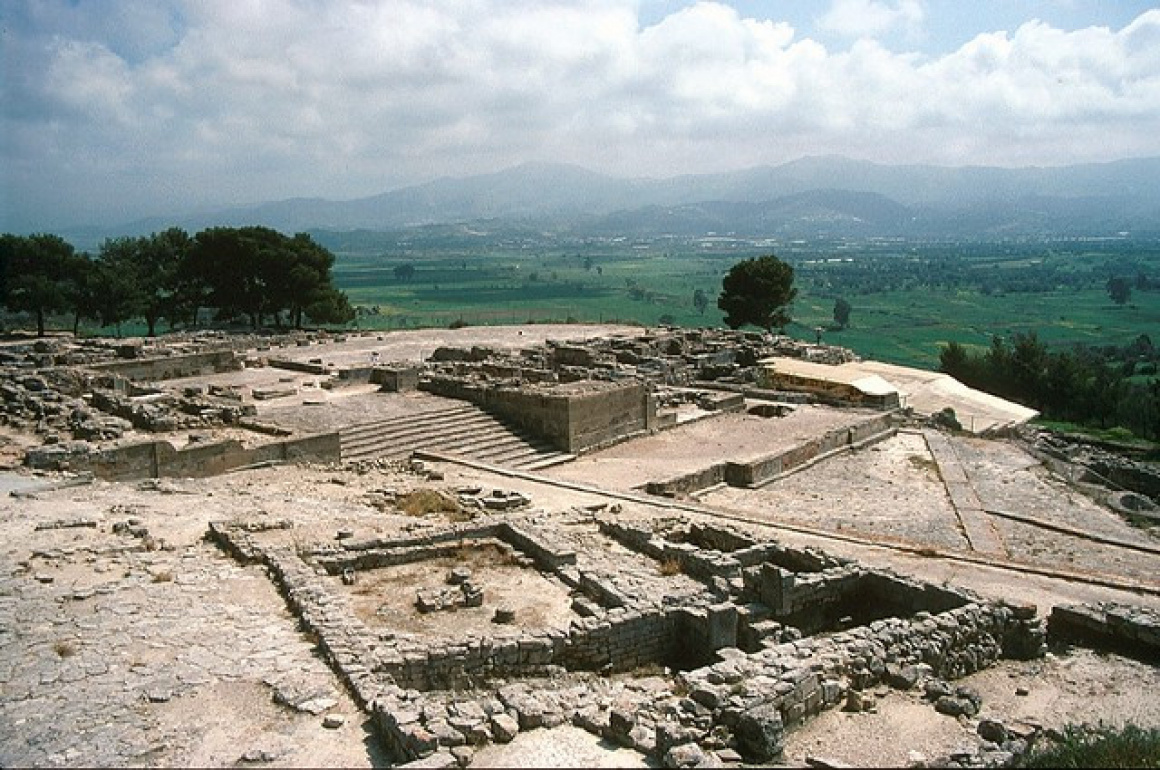The Phaistos Palace invites travelers on a journey 4,000 years back in time, into the heart of Minoan Crete. Perched atop a gentle hill on the west edge of the fertile Messara Plain, the palace ruins overlook rolling olive groves and distant mountains. In the golden afternoon light, long stone steps and towering pithoi (storage jars) cast elongated shadows. Unlike the famous (and often crowded) Knossos, Phaistos exudes a tranquil, almost mystical atmosphere. Wandering its weathered foundations with only the cicadas and Cretan breeze as company, you can't help but feel the weight of ancient history and myth surrounding you.
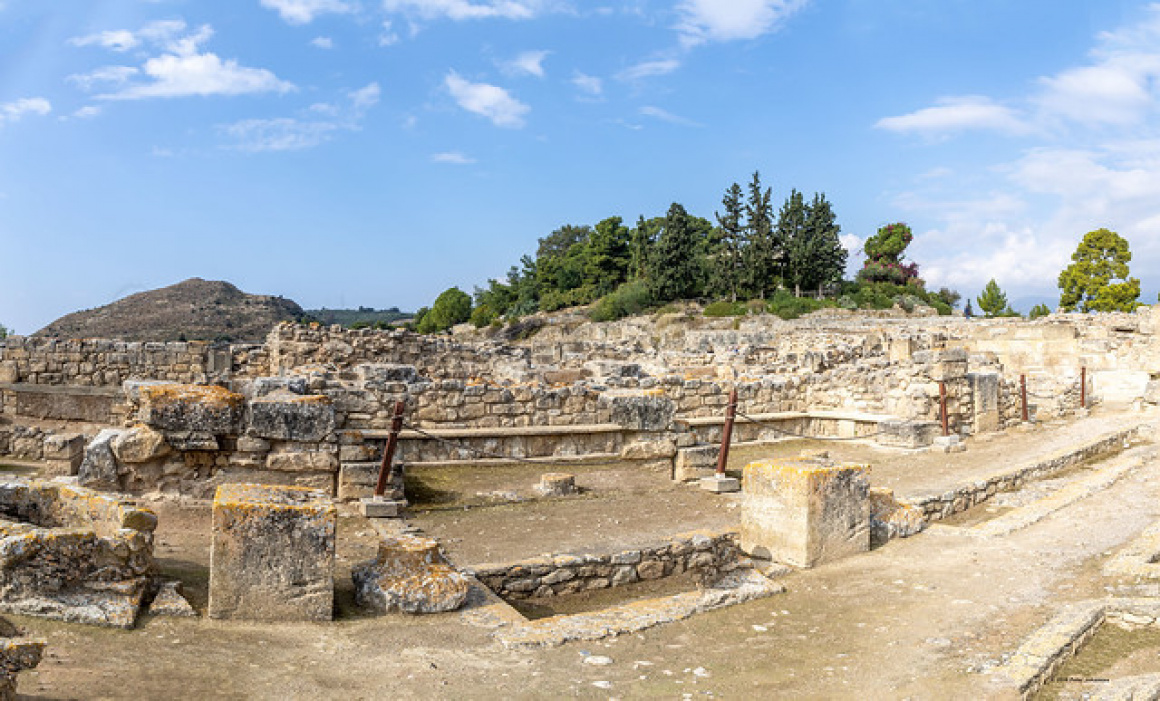
 'Kreta - Palast von Phaistos 10' - Attribution: Bumbus
'Kreta - Palast von Phaistos 10' - Attribution: BumbusHistory & Mythology
Phaistos was one of the great centers of the Minoan civilization, flourishing during the Bronze Age (circa 3000–1400 BC). It is the second-largest Minoan palace on Crete, a testament to the island's earliest advanced society. According to Greek mythology, Phaistos was ruled by King Rhadamanthus, a son of Zeus and brother of King Minos of Knossos. This legendary lineage lends Phaistos an air of mythic importance, as if the stones themselves whisper tales of gods and heroes.
Archaeology reveals that Phaistos was first built around 1900 BC with sophisticated architectural design, including grand staircases, a central court, and advanced storage and drainage systems. The palace was destroyed and rebuilt twice, with the final phase (the ruins visible today) dating from around 1700–1450 BC. Around 1450 BC, Phaistos – like other Minoan palaces – met a mysterious end. Whether due to earthquake, invasion, or volcanic fallout, the site was abandoned, leaving behind only clues of its past glory.
One of archaeology's most captivating mysteries was unearthed here: the Phaistos Disc. In 1908, Italian archaeologist Luigi Pernier discovered a peculiar clay disc buried in the ruins. It is roughly the size of a dinner plate, stamped on both sides with a spiral of strange symbols. To this day, no one has definitively deciphered the disc's 241 characters, making it an enduring enigma of ancient script. The disc is displayed in the Heraklion Museum, but its origin at Phaistos adds to the site's allure – you are literally walking the grounds of an unsolved historical puzzle.
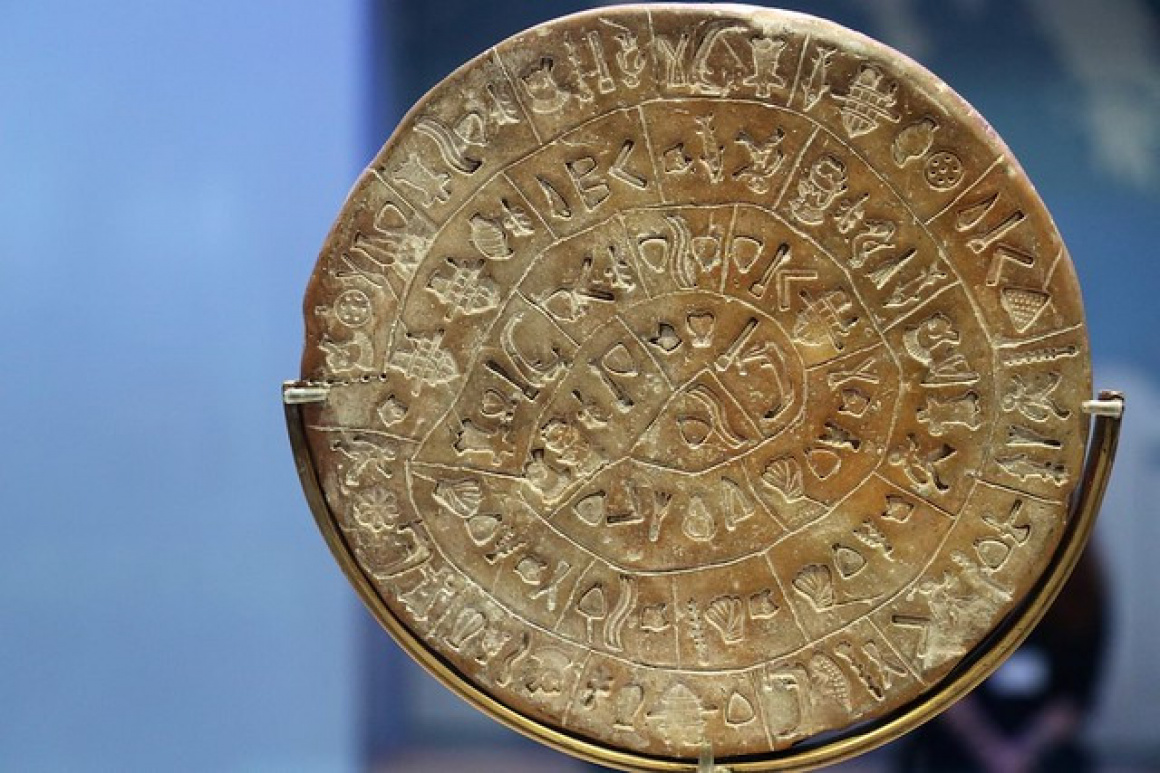
 'Phaistos Disk' - Attribution: Seoirse
'Phaistos Disk' - Attribution: SeoirseExploring the Palace Ruins
Walking through Phaistos, you'll traverse the same courtyards and corridors as Minoan priest-kings and officials. The Grand Staircase welcomes you into what was once a multi-storied complex. Just beyond lies the expansive Central Court, the open-air heart of the palace where ceremonies and gatherings took place. Imagine this plaza alive with colorful frescoes, priests in flowing robes, and perhaps the sound of ritual drums echoing off the surrounding buildings.
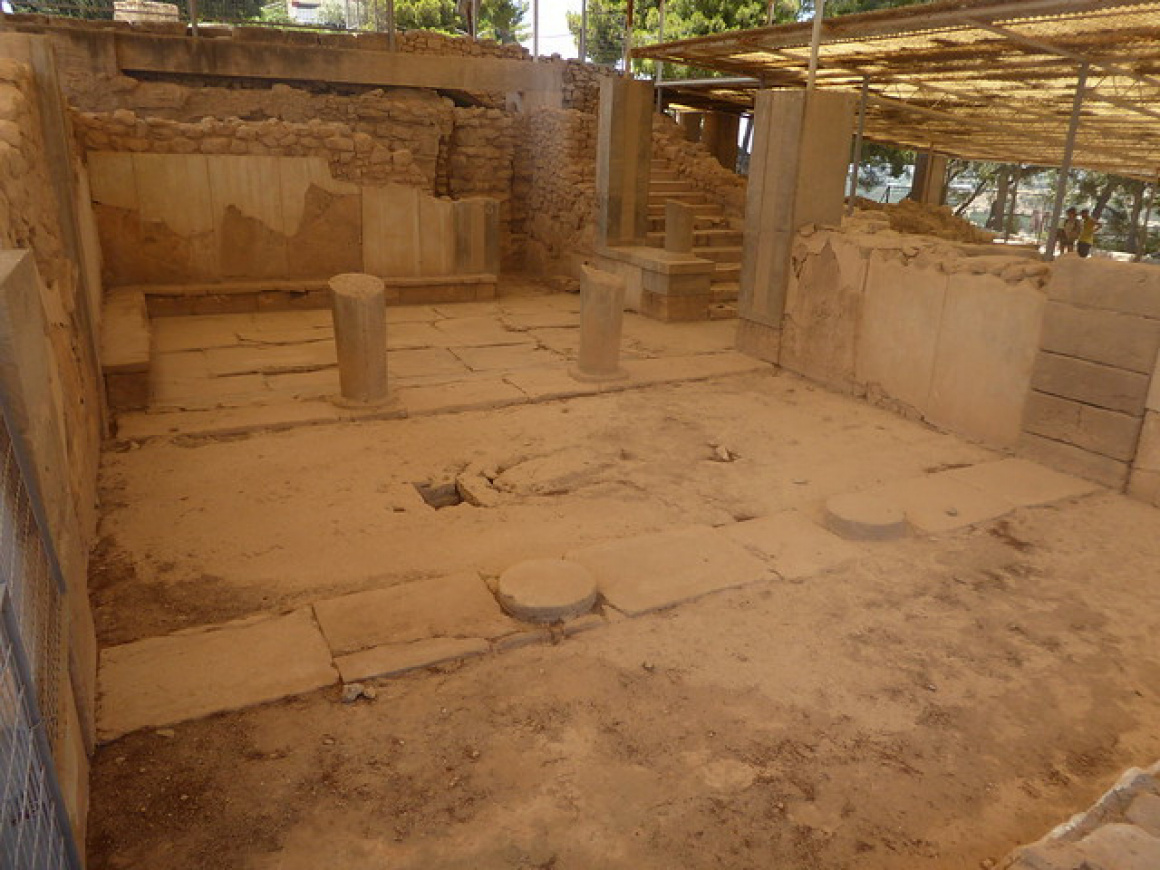
 'P1040302' - Attribution: Hyspaosines
'P1040302' - Attribution: HyspaosinesOn the north side of the court, eight deep theatrical steps form a small amphitheater-like area. Scholars believe audiences sat here to watch religious processions or performances. Stand on these steps and gaze out, picturing acrobats somersaulting over bulls as in the famous Minoan bull-leaping frescoes.
To the west, a paved processional way leads to what was the palace entrance. You can follow this ancient road with your feet, passing by remnants of storerooms. Enormous clay pithoi still sit in situ, once holding olive oil, grain, and wine – the lifeblood of the palace's economy. One such jar is so large that a grown person could hide inside it. These storage magazines speak to the palace's role as the region's administrative and agricultural hub, collecting and redistributing produce from the plain.
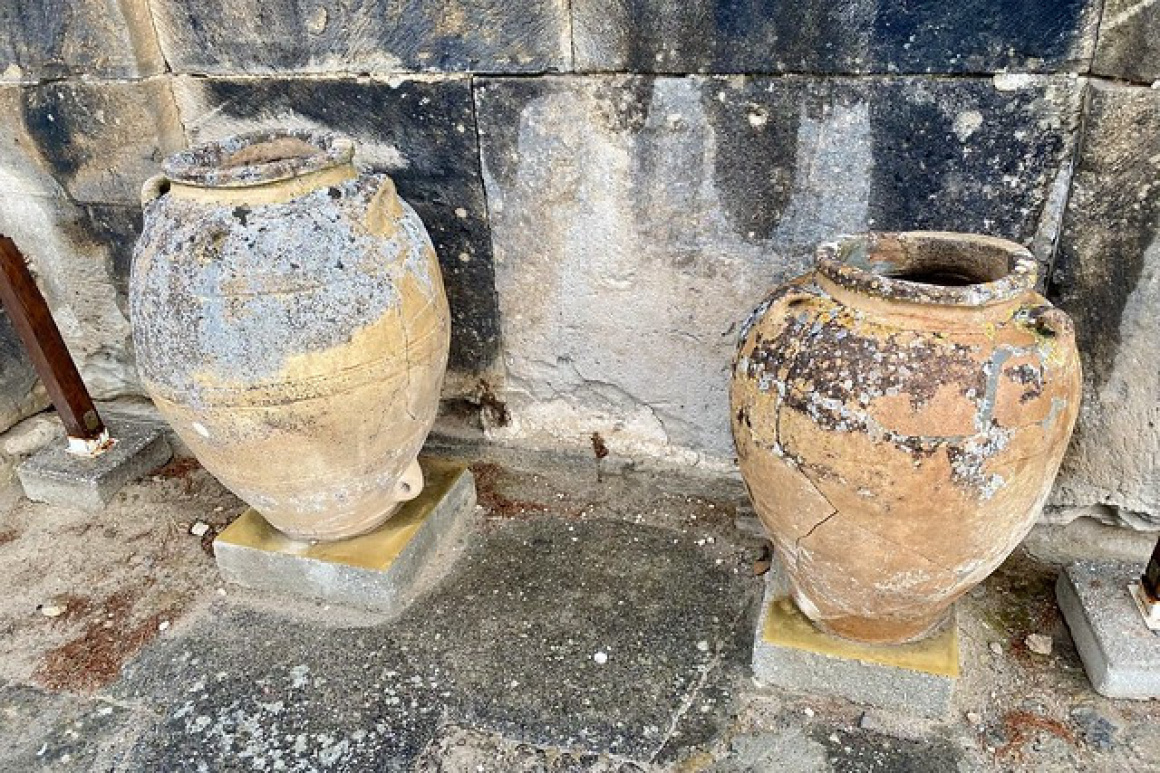
 'Phaistos 2021 – Jars' - Attribution: Michiel2005
'Phaistos 2021 – Jars' - Attribution: Michiel2005In the southern wing are foundations of the royal apartments and a lustral basin (sunken room) possibly used for ritual purification. Though only low walls remain, you can trace the outline of what may have been the throne room or religious sanctuary. It takes little imagination to envision frescoed walls and wooden columns decorating these spaces.
Wander over to the edge of the complex, and you're treated to a stunning panorama. From Phaistos you can see across the patchwork of the Messara Plain all the way to Mount Ida (Psiloritis), Crete's highest peak, looming on the horizon. This strategic view is no accident – the Minoans chose this hilltop for its commanding oversight of both the fertile land and the route south to the sea at Kommos harbor. Even today, the vantage is incredible. Early morning and late afternoon visits are especially rewarding, when the angle of the sun brings out every texture in the stonework and the heat is gentler.
Getting There:
Phaistos is located in south-central Crete, about 60 km (37 mi) south of Heraklion. Most visitors drive – the route passes through rustic villages and vineyards (consider stopping in Agios Myronas or Zaros for a coffee). Plenty of parking is available at the site entrance. If you don't have a car, excursions run from major resort towns, or you can take a public bus from Heraklion to the nearby village of Tymbaki and grab a short taxi ride from there.
Hours & Admission:
The archaeological site is open year-round. Summer hours (April–October) are typically 8:00 to 20:00 daily, while in winter it may close by 15:00. (Do double-check current times as they can change.) A modest entrance fee (around €8) grants access to the ruins. Facilities at the entrance include a small ticket office, restrooms, and a kiosk selling cold drinks and guidebooks. There isn't much shade once you're in the palace complex, so bring a hat, sunscreen, and water, especially if visiting at midday.
Guided vs. Independent Visits:
Phaistos is well-signposted, and informational panels in Greek and English help explain key areas. Many travelers enjoy exploring at their own pace. If you prefer deeper insight, consider hiring a licensed guide from Heraklion or joining a tour. Guides can vividly reconstruct palace life and point out subtle features you might miss – like the marks of an ancient door pivot or the faint traces of color where frescos once adorned a wall.
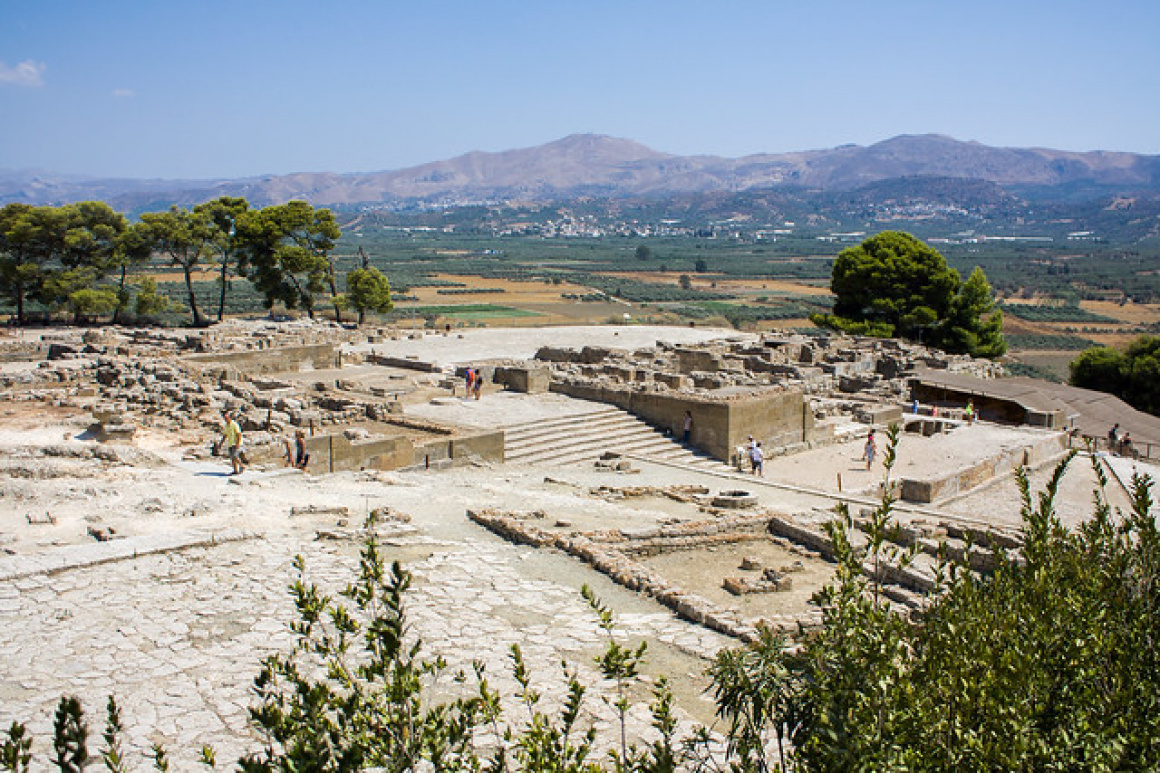
 'Phaistos' - Attribution: Shadowgate
'Phaistos' - Attribution: ShadowgateInsider Tips:
Visit in the morning or late afternoon to avoid the harshest sun and tour bus crowds. Not only is it more comfortable, but the slanting light makes for better photos and a more atmospheric experience. The site's hilltop is often breezy; in cooler months a light jacket might be handy. As you explore, keep an eye out for a small roped-off pit on the north end of the site – this is where the famed Phaistos Disc was discovered, a humble spot that yielded a tremendous find.
After taking in the ruins, you might relax at one of the tavernas in nearby villages. Just downhill in Agios Ioannis or Voroi, you'll find family-run tavernas where you can lunch on local specialties like antikristo lamb or fresh tomatoes with mizithra cheese. It's the perfect reward after a walk through antiquity.
Nearby Attractions
Phaistos sits amidst one of Crete's richest archaeological landscapes. Just 3 km away is Agia Triada, a Minoan villa or mini-palace believed to be a royal country residence – well worth a quick stop for its beautiful setting and intriguing ruins. A 15-minute drive south brings you to the coast and Matala Beach, famous for its sandstone caves once inhabited by hippies in the 1960s. Matala's turquoise waters and dramatic cliffside caves make it an excellent place to cool off after Phaistos. Time your visit right and you might catch a spectacular sunset from Matala – one of Crete's best.
For those keen on Minoan history, consider linking Phaistos with a visit to other palace sites. The Malia Palace on Crete's north shore and Zakros Palace on the far eastern coast offer further perspectives on Minoan architecture and are covered in our other guides. Each site has its own unique finds – for instance, Malia yielded the famous solid-gold “Bee Pendant” treasure, while Zakros was the only palace found largely unlooted, with an intact treasury of artifacts. Exploring multiple palaces will deepen your appreciation for how advanced and far-reaching the Minoan civilization was.
For more on Crete's ancient wonders, see our dedicated guides on Gortyna Ruins – a classical-era city with its ancient law code – and Knossos Palace, the grand capital of Minoan Crete.


